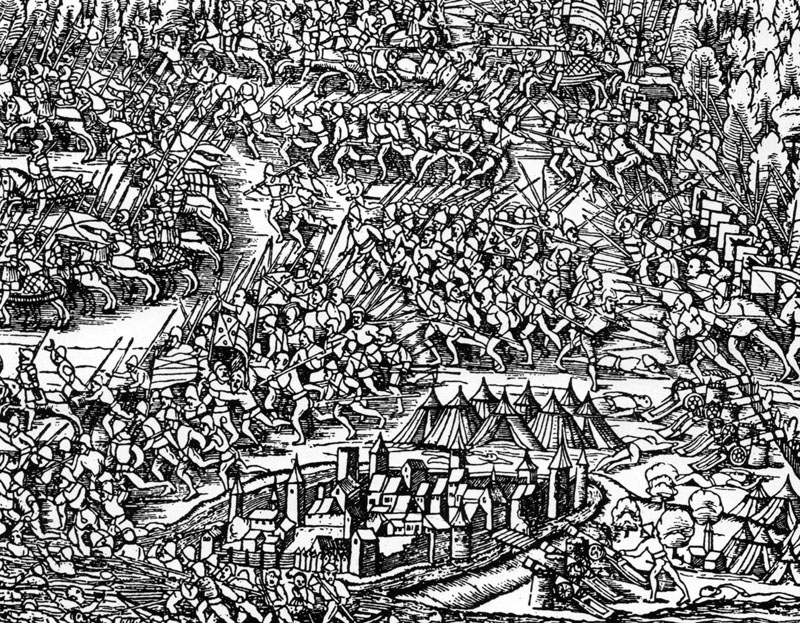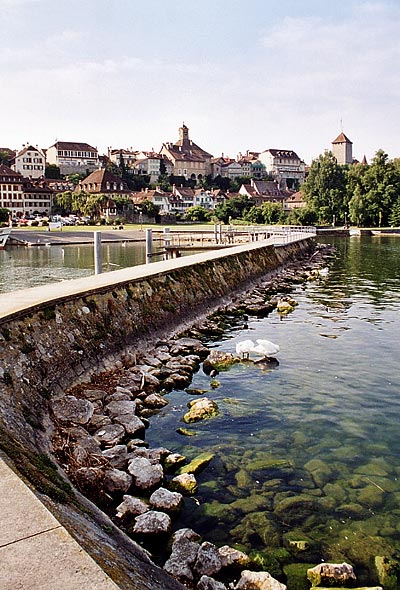|
Bas-Vully
Bas-Vully ( frp, Bâs-Vulyi) is a former municipality in the district of See in the canton of Fribourg in Switzerland. On 1 January 2016 the former municipalities of Bas-Vully and Haut-Vully merged to form Mont-Vully. History Bas-Vully is first mentioned in 968 as ''Williacense''. Until 1831 it was known as ''vor Commune générale des quatre villages de La Rivière''. The municipality was formerly known by its German name ''Unterwistenlach''; however, that name is no longer used. Geography Bas-Vully had an area, , of . Of this area, or 70.2% is used for agricultural purposes, while or 12.6% is forested. Of the rest of the land, or 13.8% is settled (buildings or roads), or 2.9% is either rivers or lakes and or 0.6% is unproductive land.Swiss Federal Statis ... [...More Info...] [...Related Items...] OR: [Wikipedia] [Google] [Baidu] |
Mont-Vully
Mont-Vully (; frp, Mont-Vulyi) is a Municipalities of Switzerland, municipality in the district of See (district of Fribourg), See in the Cantons of Switzerland, canton of Fribourg (canton), Fribourg in Switzerland. It was formed on 1 January 2016 when the former municipalities of Bas-Vully and Haut-Vully merged. History Haut-Vully is first mentioned around 968-85 as ''Vuisliacense''. In 1453 it was mentioned as ''Vuilliez''. Bas-Vully is first mentioned in 968 as ''Williacense''. Until 1831 it was known as ''vor Commune générale des quatre villages de La Rivière''. The municipality was formerly known by its German name ''Unterwistenlach''; however, that name is no longer used. Geography Mont-Vully has an area of . Demographics Mont-Vully has a population () of . Heritage sites of national significance The House De W. J. Merz, the Gatschet House, the Les Rondas House, the De Steiger House, the d’Erlach-Velga House, the de Wattenwyl House and the oppidum of Mont Vully ... [...More Info...] [...Related Items...] OR: [Wikipedia] [Google] [Baidu] |
See (district Of Fribourg)
See or Lac District (german: Seebezirk, french: District du Lac) is one of the seven districts of the canton of Fribourg in Switzerland. Lying to the north of the canton, the district is bilingual ( French/German). Its territory enclaves the two Bernese municipalities of Münchenwiler and Clavaleyres, while its own village of Wallenbuch (now part of Gurmels) is an exclave within Bern. It has a population of (as of ). Municipalities See/Lac consists of the following seventeen municipalities: Coat of arms The blazon of the district coat of arms is ''Argent, a Lion rampant Gules crowned and armed Or on Coupeaux Vert.'' Demographics See/Lac has a population () of .. Two thirds of the population () speak German (67.1%) as their first language, French is the second most common (24.9%), there are (1.1%) who speak Italian and (0.1%) who speak Romansh. , the population was 49.9% male and 50.1% female. The population was made up of 13,164 Swiss men (40.6% of the population) and 3 ... [...More Info...] [...Related Items...] OR: [Wikipedia] [Google] [Baidu] |
Haut-Vully
Haut-Vully ( frp, Hiôt-Vulyi) is a former municipality in the district of See/Lac in the canton of Fribourg in Switzerland. Until 1977, it was officially known as ''Vully-Le-Haut''. Its German name of Oberwistenlach is now little used. On 1 January 2016 the former municipalities of Bas-Vully and Haut-Vully merged to form Mont-Vully. History Haut-Vully is first mentioned around 968-85 as ''Vuisliacense''. In 1453 it was mentioned as ''Vuilliez''. Geography Haut-Vully had an area, , of . Of this area, or 70.4% is used for agricultural purposes, while or 13.2% is forested. Of the rest of the land, or 13.1% is settled (buildings or roads), or 2.5% is either rivers or lakes and or 0.7% is unproductive land.Swiss Federal Statistical Office-Land Use Statistics [...More Info...] [...Related Items...] OR: [Wikipedia] [Google] [Baidu] |
Inventory Of Swiss Heritage Sites
The Federal Inventory of Heritage Sites (ISOS) is part of a 1981 Ordinance of the Swiss Federal Council implementing the Federal Law on the Protection of Nature and Cultural Heritage. Sites of national importance Types The types are based on the Ordinance and consolidated/translated as follows: *city: german: Stadt, Stadt/Flecken, it, città, french: ville *town: german: Kleinstadt, Kleinstadt (Flecken), it, borgo, borgo/cittadina, french: petite ville *urbanized village: german: verstädtertes Dorf, it, villaggio urbanizzato, french: village urbanisé, rm, vischnanca urbanisada *village: german: Dorf, it, villaggio, french: village, rm, vischnanca *hamlet: german: Weiler, it, frazione, frazione (casale), french: hameau, rm, aclaun *special case: german: Spezialfall, it, caso particolare, french: cas particulier, cas spécial, rm, cas spezial References * External links ISOS* {{DEFAULTSORT:Heritage Sites Heritage registers in Switzerland Switzerland geograph ... [...More Info...] [...Related Items...] OR: [Wikipedia] [Google] [Baidu] |
Oppidum
An ''oppidum'' (plural ''oppida'') is a large fortified Iron Age settlement or town. ''Oppida'' are primarily associated with the Celtic late La Tène culture, emerging during the 2nd and 1st centuries BC, spread across Europe, stretching from Britain and Iberia in the west to the edge of the Hungarian plain in the east. These settlements continued to be used until the Romans conquered Southern and Western Europe. Many subsequently became Roman-era towns and cities, whilst others were abandoned. In regions north of the rivers Danube and Rhine, such as most of Germania, where the populations remained independent from Rome, ''oppida'' continued to be used into the 1st century AD. Definition is a Latin word meaning 'defended (fortified) administrative centre or town', originally used in reference to non-Roman towns as well as provincial towns under Roman control. The word is derived from the earlier Latin , 'enclosed space', possibly from the Proto-Indo-European , 'occupi ... [...More Info...] [...Related Items...] OR: [Wikipedia] [Google] [Baidu] |
Galmiz
Galmiz (former French name: Charmey) is a former municipality in the district of See in the canton of Fribourg in Switzerland. On 1 January 2022 the former municipalities of Galmiz, Gempenach and Clavaleyres (Canton of Bern) merged into the municipality of Murten. History Galmiz is first mentioned in 1242 as ''Chalmitis''. In 1340 it was mentioned as ''Charmey''. Geography Galmiz has an area, , of . Of this area, or 70.5% is used for agricultural purposes, while or 18.7% is forested. Of the rest of the land, or 7.8% is settled (buildings or roads), or 0.8% is either rivers or lakes and or 2.1% is unproductive land.Swiss Federal Statistical Office-Land Use Statistics 2009 data accessed 25 March 2010 Of the built up area, housing and buildings ma ... [...More Info...] [...Related Items...] OR: [Wikipedia] [Google] [Baidu] |
Vully Seeland
Vully may refer to the following places in Switzerland: *Bas-Vully, a former municipality in the district of See in the canton of Fribourg *Broye-Vully District, a district in Vaud Canton *Haut-Vully, a former municipality in the district of See/Lac in the canton of Fribourg *Mont-Vully, a municipality in the district of See in the canton of Fribourg *Vully-les-Lacs, a municipality in the district of Broye-Vully in the canton of Vaud *Mont Vully Mont Vully (653 m; in German also known as ''Wistenlacherberg'' hls-dhs-dss.ch) is a , a hill of the Swiss Plateau {{place name disambiguation ... [...More Info...] [...Related Items...] OR: [Wikipedia] [Google] [Baidu] |
Murten
Murten (German language, German) or Morat (French language, French, ; frp, Morât ) is a bilingual Municipalities of Switzerland, municipality and a city in the See (district of Fribourg), See district of the Cantons of Switzerland, canton of Fribourg (canton), Fribourg in Switzerland. It is located on the southern shores of Lake Morat (also known as Lake Murten). Morat is situated between Neuchâtel and Fribourg and is the capital of the See/Lac District of the canton of Fribourg. It is one of the municipalities with a majority (about 75%) of German speakers in the predominantly French-speaking Canton of Fribourg. On 1 January 1975 the former municipality of Burg bei Murten merged into the municipality of Murten.Nomenklaturen – Amtliches Gemeindeve ... [...More Info...] [...Related Items...] OR: [Wikipedia] [Google] [Baidu] |
Ins, Switzerland
Ins (; french: Anet ) is a municipality in the Seeland administrative district in the canton of Bern in Switzerland. History Ins is first mentioned in 1009 as ''Anestre''. In 1179 it was mentioned as ''Anes''. The area around Ins has been inhabited since at least the Iron Age. On Schaltenrain hill, individual graves and groups of grave mounds have been found stretching over of the hill. At least four different sites have been discovered. The first excavation was carried out under the direction of Gustav von Bonstetten in 1848, who placed his discoveries in the Historical Museum of Berne. In the following year, Emanuel F. Müller excavated other sites on the hill. The third large excavation was in 1908-09 under Jakob Heierli, who placed his finds in the Museum Schwab in Bienne. Due to the number and variety of artifacts, smaller sites and individual items continue to be discovered. Bonstetten's excavations discovered a minimum of ten grave mounds, in height, arraig ... [...More Info...] [...Related Items...] OR: [Wikipedia] [Google] [Baidu] |
Murten/Morat
Murten (German) or Morat ( French, ; frp, Morât ) is a bilingual municipality and a city in the See district of the canton of Fribourg in Switzerland. It is located on the southern shores of Lake Morat (also known as Lake Murten). Morat is situated between Neuchâtel and Fribourg and is the capital of the See/Lac District of the canton of Fribourg. It is one of the municipalities with a majority (about 75%) of German speakers in the predominantly French-speaking Canton of Fribourg. On 1 January 1975 the former municipality of Burg bei Murten merged into the municipality of Murten.Nomenklaturen – Amtliches Gemeindeverzeichnis der Schweiz accessed 9 February 2013 It was followed on 1 January 1991 by the former municipality of |
Muntelier
Muntelier ( French name: Montilier; frp, Monteliér ) is a municipality in the district of See in the canton of Fribourg in Switzerland. It is one of the municipalities with a large majority of German speakers in the mostly French speaking Canton of Fribourg. History Muntelier is first mentioned in 1270 as ''Es Montelliers''. Geography Muntelier has an area of . Of this area, or 26.5% is used for agricultural purposes, while or 33.6% is forested. Of the rest of the land, or 36.3% is settled (buildings or roads) and or 3.5% is unproductive land.Swiss Federal Statistical Office-Land Use Statistics 2009 data accessed 25 March 2010 Of the built up area, industrial buildings made up 2.7% of the total area while housing and buildings made up 14.2% and ... [...More Info...] [...Related Items...] OR: [Wikipedia] [Google] [Baidu] |
Müntschemier
Müntschemier (french: Monsmier) is a municipality in the Seeland administrative district in the canton of Bern in Switzerland. History Müntschemier is first mentioned in 1185 as ''Munchimur''. The earliest traces of a settlement in the area are some Mesolithic flint tools which were found at Baholz-Oberfeld. Other prehistoric traces include a Bronze Age grave or ruins of a settlement at Müntschemier marsh and a Roman era burial site at Gugleracker. In 1185 the Abbey of St. Johannsen began ruling over the village. In 1474 the entire ''Herrschaft'' of Erlach, including Müntschemier, was acquired by Bern. It became part of the Bernese court of Ins in the bailiwick of Erlach. In addition to belonging to the court, Müntschemier has always been part of the parish of Ins. In 1827, part of the village was destroyed in a fire. It was rebuilt in the following years. The cost of the 1874-83 Jura water correction project forced the Bürgergemeinde to sell the common fie ... [...More Info...] [...Related Items...] OR: [Wikipedia] [Google] [Baidu] |







